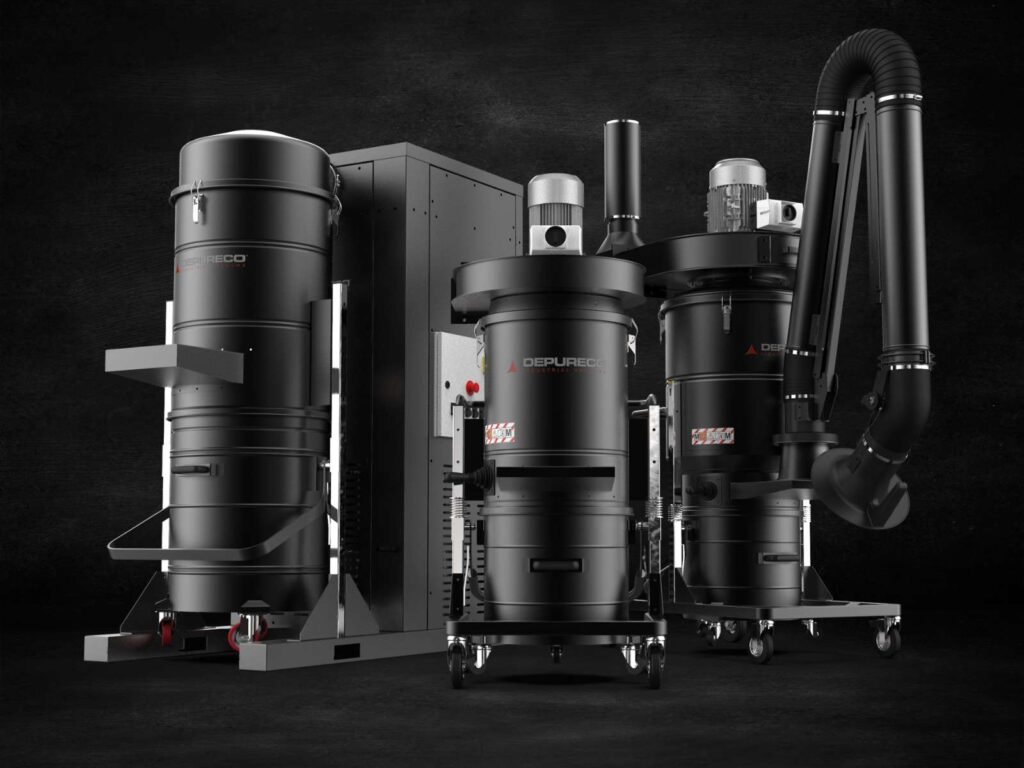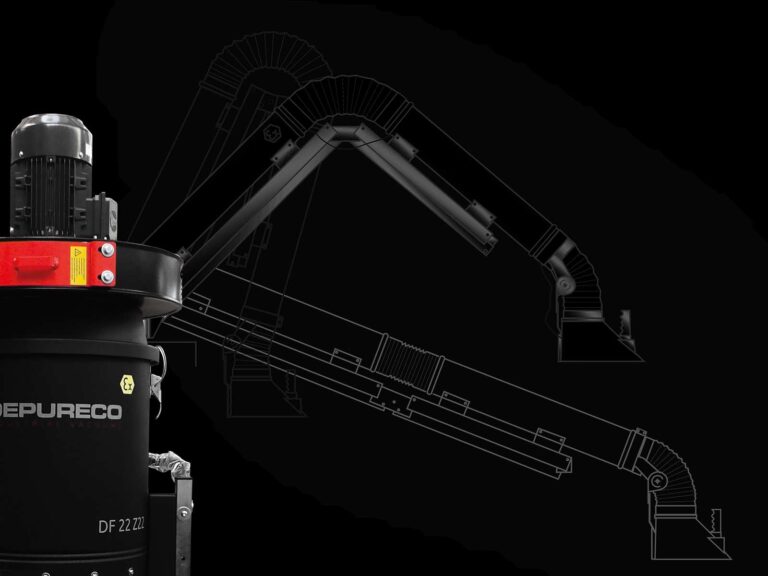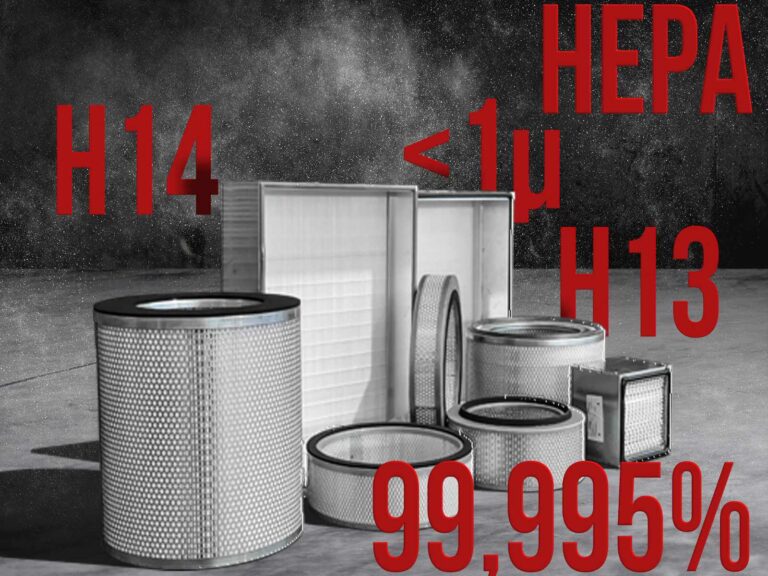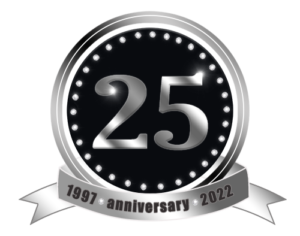Industrial Vacuums.
Providing
The Solution.
Suction Of Airborne Volatile Dust
Extraction of airborne dust in the work environment is a key activity to prevent risks from exposure to airborne dust.
The risks associated with airborne dust are many and vary depending on the nature of the dust itself.
Among the main risks we can mention the decrease in air quality, irritation of the eyes and respiratory tract, the onset of lung disease, and, in some cases, the possibility of fire or explosion.

To prevent these risks, it is essential to suck up dust at the source, drawing dust directly where it is generated, preventing it from being dispersed into the work environment.

Industrial vacuum cleaners at the source: preventing dispersion in the working environment
Industrial vacuum cleaners installed at the source are essential tools for preventing the dispersion of dust and harmful substances in the work environment. Because of their ability to directly suck in contaminants at the source, these devices are able to significantly reduce the amount of particulate matter and hazardous substances that are dispersed into the air. This not only helps to maintain a healthier and safer work environment, but also helps to protect the health of workers by reducing the risk of respiratory and other illnesses related to exposure to harmful substances.
However, to ensure the effectiveness of industrial vacuum cleaners at the source, it is important to choose the right model and use it properly. First, it is essential to select a vacuum cleaner that is appropriate for the specific needs of the work environment, in terms of size, power and filtration capacity. Second, it is essential to place the vacuum cleaner strategically, so as to maximize the capture of harmful substances at the source.
Industrial vacuum cleaners for installation at the source come in different configurations, but in general they can be divided into two types: those with a suction arm and those with a direct connection to the machinery.
Vacuum cleaners with suction arm are usually used for the extraction of dust emitted by machines or production processes. The suction arm can be placed directly on the source of dust emission, so that it is taken directly from the point where it is generated. This solution is particularly effective in environments where there are multiple dust sources and where only the necessary amount of air needs to be sucked in, avoiding recirculation of dust in the work environment.
Industrial vacuum cleaners must be equipped with a suitable filtration system that can capture the sucked-in dust and prevent it from spreading into the work environment. The filtration system must be sized to ensure good filtration efficiency and low air flow resistance, so as to ensure good air flow and low noise. Filters of progressive efficiency up to HEPA filtration protect suction unit and prevent re-entry of sucked-in dust into the working environment.

Extraction of suspended dust in the work environment is a key solution to prevent risks from exposure to airborne dust. Source vacuum cleaners are an effective tool for taking dust directly from the source of emission and preventing it from spreading into the work environment.





